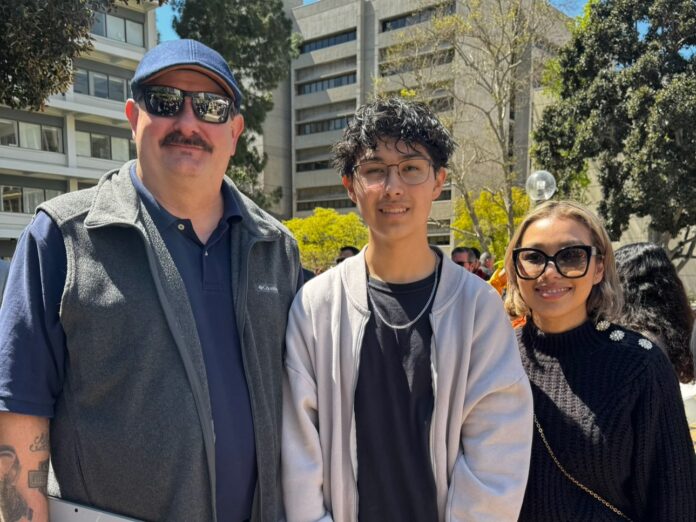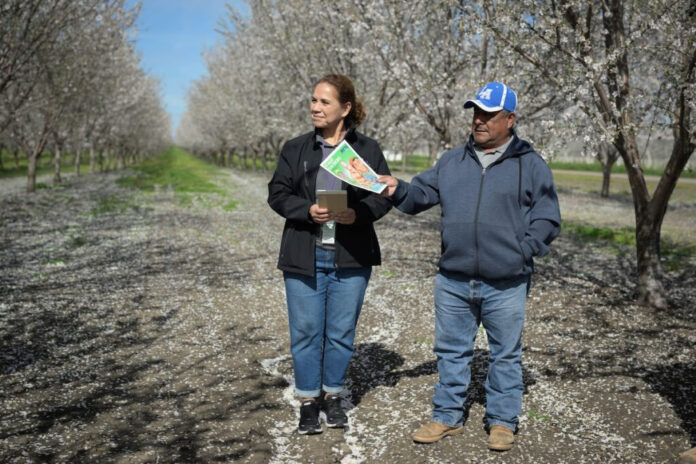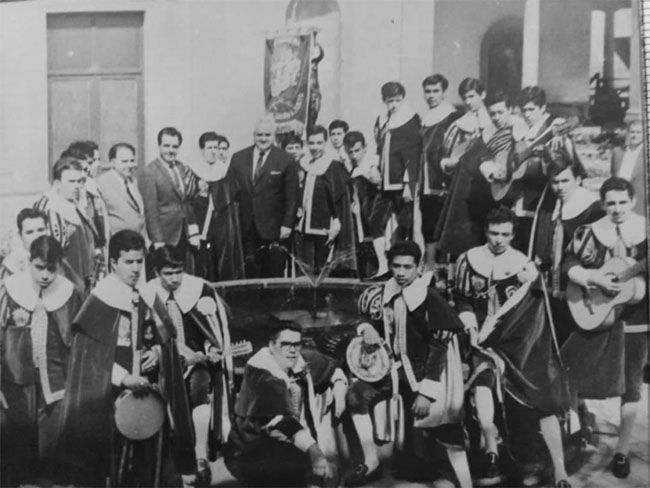At the age of 11 she debuted at the Palacio de Bellas Artes in Mexico City and since then, she has conquered the main classical music venues worldwide with her musical talent and creativity
by Xóchitl TC
Daniela Liebman is considered the youngest female pianist from her country, Mexico. Coming from a family formed in classical music and the visual arts, he shares in an interview with El Reportero de San Francisco, how his passion for playing the piano arose and also, what his experience has been like debuting with the main philharmonic orchestras at the international level. world.
Daniela will perform at CIA at Copia in Napa on Wednesday, July 17 at 11 am.
At what moment did you discover your passion for playing the piano and classical music?
“I come from a family formed in music and the visual arts. On my mother’s side, they painted or were architects. And on my dad’s side, my grandmother studied piano and taught lessons all her life. My dad completed a Bachelor’s degree in Violin, so I grew up listening to classical music at home. I remember that every night my dad practiced in the living room and lulled me to sleep – I was 3 or 4 years old – so it was very natural to want to be like my dad and that’s how it all started,” she said.
At 11 or 12 years old she understood what it was like to have a life where everything revolves around music and at that age she intellectually understood that the piano would be her instrument of musical expression, although from the age of 5 she began taking classes with her father. “Practice, concerts, traveling, discipline, sacrifice and being a person have not been easy, but it is what I like to do the most,” she highlighted.
What is one of your musical influences?
“From a very young age, I believe that someone like Martha Argerich, for being a woman and for being Latin American and “for being such a beast” for daring; because I think we still live in a world where it is very easy to hear that women do not have the same ability to do things and seeing someone who could do it like her, that inspired me and, not even for feminist reasons, more Good to see someone who looks like me,” he said.
Daniela Liebman has had the joy of performing classic pieces by Mozart and Shostakovich’s in venues such as the Palacio de Bellas Artes in Mexico City and the Perelman Stage/Stern Auditorium in New York, to name a few, and facing these majestic spaces that host classical music, he expressed “it was really something that I did not expect, because growing up in Mexico you hear that the Palace of Fine Arts as if it were a myth and I did not think that I would get to play there, much less at that age.” , then it was like a dream, I debuted in Fine Arts at the age of 11.”
The family has been the most vital part of his career, “when you are a child what can you do at five, classical music is not very popular at school or when you go to parties they don’t play it, for me it did take a It takes a while to get used to classical music, because it is a language and if you don’t listen to it a lot, you won’t be able to understand it like your mother tongue. I would say that my parents took me to a lot of concerts and my dad played with me on the piano and we sang, it was a way of socializing and going to the opera that, even though I fell asleep and kicked the chair in front of me, there came a time when it started to bother me. like it,” he said.
Regarding the support received from her parents, she shared that it has been a family effort, “the sacrifice they have made for me in time and effort to take me to classes, competitions and concerts.” Every day they took me from Jalisco to Colima to take classes and what I am now I see as a constant effort that I owe everything to them,” she stated.
As a young pianist and student, he must organize his time to be able to attend to all his responsibilities and regarding the hours of practice he invests daily, he indicated “Note that I don’t count, it has been very difficult for me to count hours of practice and what I do. Normally it is a list of what I should do and how many hours I need to memorize a piece when I have a concert, it motivates me more to think about the specific challenge of playing a piece than the hours,” he pointed out.
What is your hobby and favorite music?
“I love cinema and I love movies, if I wasn’t playing the piano I would be doing something in that. As for music, I would say that it depends a lot from rock to bossa-nova,” she said. Regarding a possible collaboration to score a film, he indicated that there has not yet been any approach “I love anything that has to do with creativity and music and the opportunity has not presented itself, but I hope at some point to achieve it.” shared.
Would you like to contribute to your community with a project that adds to society?
It is a long-term goal of mine, but for the moment I find myself looking for personal balance between music and school. However, I believe that I would not feel like a good human if I went my entire life without trying to return to my community to share, help and create something.”
Finding herself studying outside her country awakens in her nostalgia for her homeland, Jalisco, and she stated that “I miss the food and her family a lot, and I consider myself part of that community that for some reason cannot live in their community.”
As part of the Bouchaine Youth Series, what would you like to convey to the Latino community at the Napa Valley Festival?
“It is an honor and I am very excited to play especially the Mexican Ballad of Ponce, because it is almost not heard outside of Mexico, Ponce – as a composer – if he does not play the guitar he will not be heard. I always like to play that piece, because the audience loves it and I; and it is part of my culture, also in 2024 it is time to recognize composers who have a fantastic career and musicality, like other composers on the program. “I am very excited to put it there,” he added.
The Napa Valley Festival is organized by the winegrowers of that region to bring together the best of music, food and wine in different spaces surrounded by the natural splendor of the Napa Valley in California.
And for that sumptuous setting, Daniela Liebman seeks to “create an atmosphere of having an open mind to different people, from other cultures or from your own culture. Sometimes we put a stereotype, even to people from our own culture, but because of my age – so young – compared to artists that I respect and have the honor of sharing the same series, I want to convey that music has a value, no matter what. age, in any country, in any part of society, because that connects us a lot as a society, and I feel very lucky to be on the side where it is time to be vulnerable – in front of the public – and to go to concerts where I get to see someone be vulnerable,” he shared.
Daniela Liebman, the youngest young Mexican pianist in the history of her country, will perform at the Napa Valley Festival next Wednesday, July 17, to delight all attendees with her unmatched talent. In that sense, she sent a message to the Latin community and, especially, to the girls who, like her, dream of having a better world through music. “Not only can you play or make a career out of what you love the most. you like to do, but there are many people who are doing it and there is a community of people who will want to hear your voice and what you have to say or contribute will always have a lot of value for society. I hope to create a larger community of artists. Mexicans and as a woman, I hope to be able to make this world look a little more open or easier to interact with,” she concluded.












